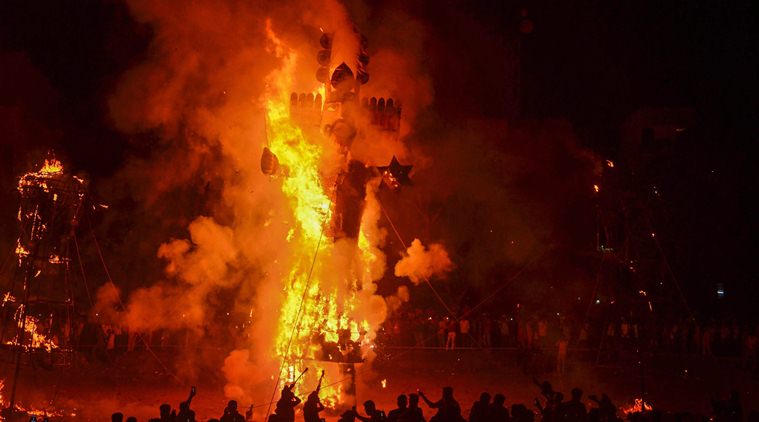 According to a petition filed in the Delhi High court, around 10,000 sets of effigies are burnt throughout the city on Dussehra. (PTI Photo)
According to a petition filed in the Delhi High court, around 10,000 sets of effigies are burnt throughout the city on Dussehra. (PTI Photo)
The Central Pollution Control Board’s air quality index might have recorded Delhi’s air quality as ‘poor’ on Friday, but this was only because the readings did not take effigy burning on Dussehra into account.Delhi’s air quality between 2 pm and 6 pm improved consistently. By 7 pm, around the time the effigies started going up in smoke, air quality started deteriorating — and fast.
At India Gate, for instance, the PM 2.5 concentration spiked from 99 micrograms per cubic metre at 7 pm to 191 at 9 pm.
At the Mandir Marg air quality monitoring station, PM 2.5 more than doubled from 102 micrograms per cubic metre to 211. This, despite weather conditions and wind speed remaining almost the same throughout the time frame.
The national acceptable standard for PM 2.5 is 60 micrograms per cubic metre.
The highest PM 2.5 concentration at 9 pm was seen in Dwarka, with the level of pollutant over six times the acceptable value at 382 micrograms per cubic metre. Similar increases were seen across the 23 air quality monitoring stations, run by the Delhi Pollution Control Committee.
According to a petition filed in the Delhi High court, around 10,000 sets of effigies are burnt throughout the city on Dussehra.